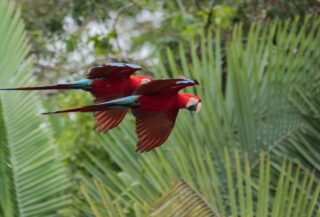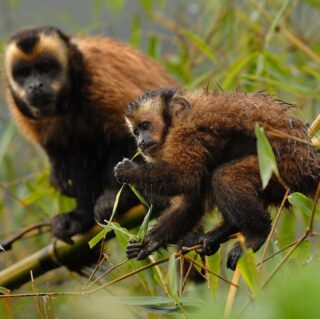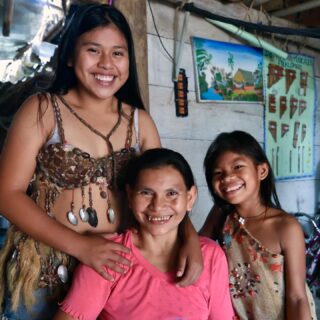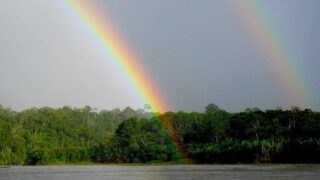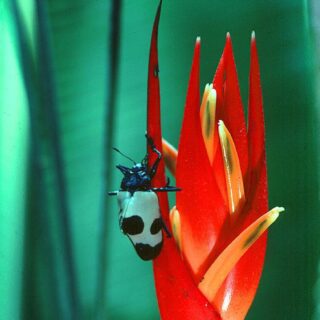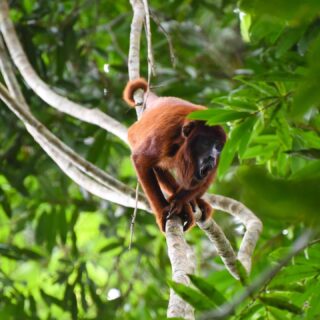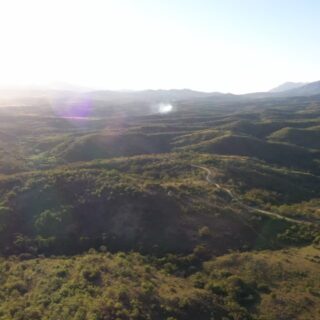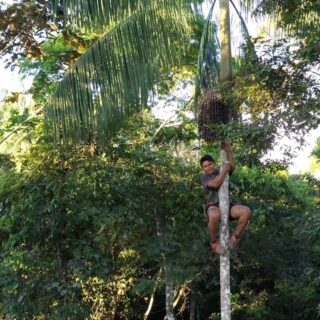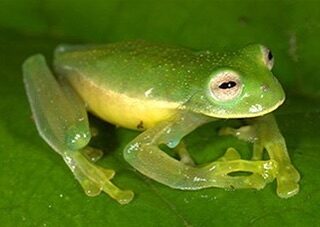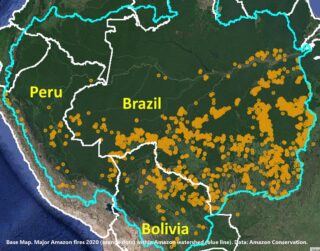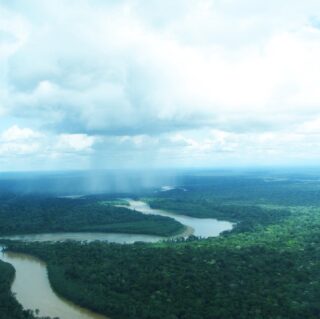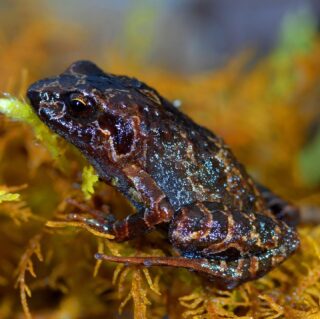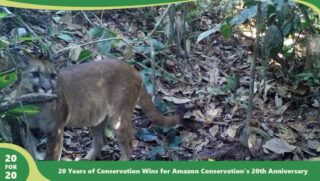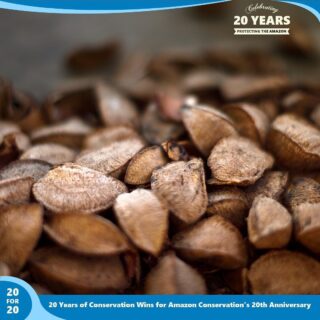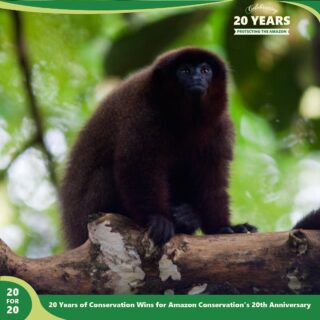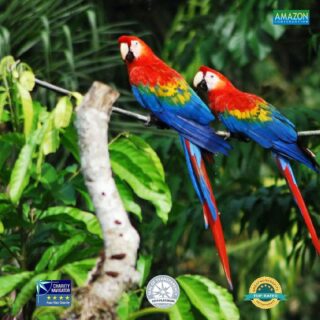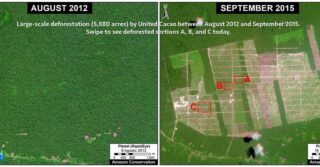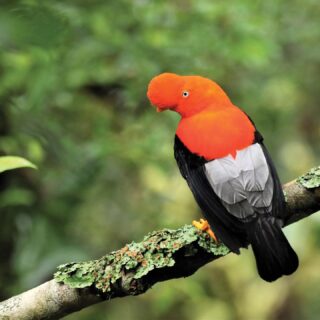Amazon Conservation Association (ACA) is delighted to share news of recent successes in community-based conservation in the Andes-Amazon region—with your support, three new protected areas were established over the past few months! Created with community engagement and participation, these new private conservation areas, covering 46,659 acres in the Cusco and Madre de Dios departments of Peru, will contribute to the protection of one of the most biologically rich places on the planet: the tropical Andes.
Private conservation areas (PCAs) are privately owned lands of biological, environmental, or scenic importance that are legally designated as conservation areas by Peru’s National System of Protected Areas and thus figure among the key landscapes that receive the system’s active protection. This area is globally recognized as a “biodiversity hotspot” due to its high concentration of endemic species facing severe habitat loss; moreover, its forests provide vital ecosystem services to the communities that live in and around them while helping to combat climate change.
Ukumari Llaqta Private Conservation Area
 The highland community of Japu created this 46,196-acre reserve in Peru’s Cusco department; this indigenous community is part of the Q’eros Nation, whose residents are said to be the closest living descendants of the Incas. The rich montane forests of the Ukumari Llaqta PCA are home to an extraordinary number of species, many threatened by habitat loss, including the spectacled bear, Andean fox, and white-tailed deer. The area ranges from Andean highlands to Amazonian foothills, and ensures a refuge for those species expected to be forced to migrate upslope to escape the impacts of climate change.
The highland community of Japu created this 46,196-acre reserve in Peru’s Cusco department; this indigenous community is part of the Q’eros Nation, whose residents are said to be the closest living descendants of the Incas. The rich montane forests of the Ukumari Llaqta PCA are home to an extraordinary number of species, many threatened by habitat loss, including the spectacled bear, Andean fox, and white-tailed deer. The area ranges from Andean highlands to Amazonian foothills, and ensures a refuge for those species expected to be forced to migrate upslope to escape the impacts of climate change.
Pumataki Private Conservation Area
 The 406-acre Pumataki PCA is located within the territory of the Pillco Grande community in the department of Cusco and shares its eastern border with the southern tip of world-famous Manu National Park. These grassland and cloud forest ecosystems are home to hundreds of species—many of them endangered, such as the spectacled bear and the puma—and also contain the headwaters of the Pilcomayo River. The Pillco Grande community, which began efforts to develop the PCA in 2009, is interested in carrying out environmentally-friendly ecotourism and research activities. Located within an area of rapid deforestation and land-use change, the community has a strong commitment to reducing threats to the area from forest fires, logging, and agricultural expansion so that future generations can receive benefits from these communal forest resources.
The 406-acre Pumataki PCA is located within the territory of the Pillco Grande community in the department of Cusco and shares its eastern border with the southern tip of world-famous Manu National Park. These grassland and cloud forest ecosystems are home to hundreds of species—many of them endangered, such as the spectacled bear and the puma—and also contain the headwaters of the Pilcomayo River. The Pillco Grande community, which began efforts to develop the PCA in 2009, is interested in carrying out environmentally-friendly ecotourism and research activities. Located within an area of rapid deforestation and land-use change, the community has a strong commitment to reducing threats to the area from forest fires, logging, and agricultural expansion so that future generations can receive benefits from these communal forest resources.
ACA worked closely with the Japu and Pillco Grande communities to train and equip community park guards as well as to move the PCA designation process forward. The creation of these new protected areas was accompanied by community agroforestry, reforestation, and sustainable agriculture projects along with training in the prevention and control of forest fires. To see these activities and the community guards in action, check out our video: Regional REDD+ Models.
These activities and new conservation area declarations in Cusco were made possible in part through the generous support of the Norwegian Agency for Development Cooperation (Norad) for two ACA projects: “New REDD Models for Tropical Montane Forests” and “Regional REDD Policy and Working Models for Indigenous and Traditional Communities in the Peruvian Andes-Amazon Interface.”
San Juan Bautista Private Conservation Area
 The 57-acre San Juan Bautista PCA, located in the buffer zone of the Tambopata National Reserve in the department of Madre de Dios, was added to Peru’s National System of Protected Areas by a local family. They wish to preserve forests on their land for their grandchildren and carry out ecotourism and provide research and education opportunities within their PCA. This very recent addition to the National System of Protected Areas will help to guarantee conservation efforts in this brilliantly diverse region that is part of the Manu-Tambopata biological corridor. Researchers have already identified 33 threatened amphibian species within the PCA and sighted rare birds such as the endangered blue-headed macaw (Primolius couloni), shown here.
The 57-acre San Juan Bautista PCA, located in the buffer zone of the Tambopata National Reserve in the department of Madre de Dios, was added to Peru’s National System of Protected Areas by a local family. They wish to preserve forests on their land for their grandchildren and carry out ecotourism and provide research and education opportunities within their PCA. This very recent addition to the National System of Protected Areas will help to guarantee conservation efforts in this brilliantly diverse region that is part of the Manu-Tambopata biological corridor. Researchers have already identified 33 threatened amphibian species within the PCA and sighted rare birds such as the endangered blue-headed macaw (Primolius couloni), shown here.
With support from the Gordon and Betty Moore Foundation, ACA provided technical support, including mapping and a species inventory, along with the legal documentation to obtain the PCA designation. While small in size, this area represents a key conservation commitment due to its location in the midst of an area rapidly being deforested by illegal gold mining in the fragile Tambopata Reserve buffer zone. Furthermore, it will provide the family with stronger legal protection against invasion of its property and forests by miners.

 Conservation Association’s conservation programs are complemented by the work of ethnomusicologist
Conservation Association’s conservation programs are complemented by the work of ethnomusicologist 
 Over the next two years, Dr. Wissler will work to create an archive of Wachiperi songs and text. Much of the present archive is in existence thanks to the hard work of anthropologist Dr. Patricia Lyon, who recorded the songs of the Wachiperi community in 1964 and 1965. In addition to the archive, a website will be created and a two-disc CD set will be produced, making certain future generations will be able to hear their ancestors’ voices and learn the songs themselves. Watch a video about her project
Over the next two years, Dr. Wissler will work to create an archive of Wachiperi songs and text. Much of the present archive is in existence thanks to the hard work of anthropologist Dr. Patricia Lyon, who recorded the songs of the Wachiperi community in 1964 and 1965. In addition to the archive, a website will be created and a two-disc CD set will be produced, making certain future generations will be able to hear their ancestors’ voices and learn the songs themselves. Watch a video about her project 
 support to 70 small landowners who are threatened by illegal gold mining and logging.
support to 70 small landowners who are threatened by illegal gold mining and logging. In one of the most diverse regions on the planet, Amazon Conservation Association (ACA) has partnered with the Institute for Peruvian Amazon Studies (IIAP, in Spanish) to support local aquaculture and agroforestry ventures. As part of this project, we are working with several communities along the
In one of the most diverse regions on the planet, Amazon Conservation Association (ACA) has partnered with the Institute for Peruvian Amazon Studies (IIAP, in Spanish) to support local aquaculture and agroforestry ventures. As part of this project, we are working with several communities along the  source of employment for local fishing communities. The region’s abundant water supply, fish biodiversity, and appropriate climate make the Amazonian lowlands well-suited to aquaculture development, allowing small family farms to produce a highly marketable source of protein and improve their own food security. Not only does farming of native river species reduce pressure on wild fish populations, but it provides small farmers with a sustainable, profitable alternative to slash-and-burn farming or gold mining.
source of employment for local fishing communities. The region’s abundant water supply, fish biodiversity, and appropriate climate make the Amazonian lowlands well-suited to aquaculture development, allowing small family farms to produce a highly marketable source of protein and improve their own food security. Not only does farming of native river species reduce pressure on wild fish populations, but it provides small farmers with a sustainable, profitable alternative to slash-and-burn farming or gold mining.  In addition to the pressures of overexploitation of native fish species, the recent rise in illegal gold mining in Madre de Dios has caused an increase in the contamination of river fish by mercury, a potent neurotoxin used to extract gold.
In addition to the pressures of overexploitation of native fish species, the recent rise in illegal gold mining in Madre de Dios has caused an increase in the contamination of river fish by mercury, a potent neurotoxin used to extract gold.  From August 11th to the 22nd of 2011, the Amazon Conservation Association (ACA) hosted its first-ever
From August 11th to the 22nd of 2011, the Amazon Conservation Association (ACA) hosted its first-ever 
 From August 11th through 22nd, the Amazon Conservation Association (ACA) is hosting its first
From August 11th through 22nd, the Amazon Conservation Association (ACA) is hosting its first 
 As illegal gold miners flock to the southeastern Peruvian region of Madre de Dios, an
As illegal gold miners flock to the southeastern Peruvian region of Madre de Dios, an  small-scale gold mining. These miners use mercury to amalgamate gold. By discarding polluted tailings and burning mercury off the gold amalgam, miners release an estimated 30 to 40 tons of mercury annually into the environment in Madre de Dios alone. Miners work without safety measures or even rudimentary equipment to prevent or reduce mercury pollution. Their negligence threatens the health and livelihoods of their families and friends and contaminates the fragile ecosystems through burning of mercury and improper disposal of the toxic chemical.
small-scale gold mining. These miners use mercury to amalgamate gold. By discarding polluted tailings and burning mercury off the gold amalgam, miners release an estimated 30 to 40 tons of mercury annually into the environment in Madre de Dios alone. Miners work without safety measures or even rudimentary equipment to prevent or reduce mercury pollution. Their negligence threatens the health and livelihoods of their families and friends and contaminates the fragile ecosystems through burning of mercury and improper disposal of the toxic chemical. With the start of the new year, it brings us great pleasure to introduce Luis Felipe Duchicela, the new executive director for Amazon Conservation Association/Asociaci
With the start of the new year, it brings us great pleasure to introduce Luis Felipe Duchicela, the new executive director for Amazon Conservation Association/Asociaci Cesar Moran
Cesar Moran